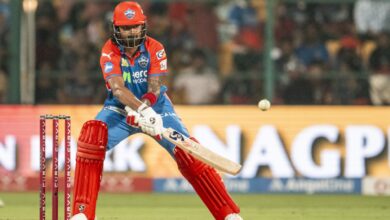Pink ball with grey shade: ‘It feels more white, less red, says Scott Boland | Cricket News

The 35-year old Australian pacer Scott Boland, who thought the opportunity to play a Test had “passed”, says he is ready to grab to play the Adelaide pink-ball Test in the absence of the injured Josh Hazlewood. Boland last played a Test in July last year and has played 10 Tests as a replacement player. Boland has also only played two first-class matches this summer on his return from a foot injury.
Watching the rain fall at the Manuka Oval, Boland, in the Prime Miner’s XI team that was set to take on the Indians in a two-day game, spoke about the challenges presented the pink ball day-and-night Test.
“It does behave a bit differently at night, but during the day it’s pretty similar to a red ball. I feel like the teams that bat first can time when they want to bowl, if they bat really well on that first day. If you get a newish ball at night, it can be pretty lethal,” Boland said. “Usually it can be two different games in the same game. During the day when the sun’s out, it doesn’t do a whole lot and then you get to the night session and the ball starts moving around a bit.”
In a game against New Zealand in 2019, Australia chose to crawl through the middle session with the batsmen Tim Paine and Cummins, getting just 38 runs, because they didn’t want to declare or try scoring runs quickly and risk getting bowled out. The plan, that successfully worked, was to bowl at the New Zealanders under lights with the pink ball. Mitch Starc ripped through the top order to leave the Kiwis struggling at 109 for 5 at stumps.
“Although it was pretty slow to watch and perhaps be a part of, it was certainly part of the pink-ball tactics to try and utilise the brand-new pink ball under lights,” Starc said then. “It’s probably justified when you take five wickets in the last session.”
The pink ball Tests at Brisbane haven’t quite gone the way of Adelaide where India were shot out for 36 during their last tour. Gabba has at times produced more runs, even under lights. “Last year at the Gabba we took the new ball and didn’t get as many wickets as what we would have hoped in that night session. Now back to Adelaide, I think they produce a really good cricket wicket that really suits the pink ball,” says Boland.
In a day-night Test in 2018 against South Africa in Adelaide, Faf du Plessis declared their innings early to try make use of the seam-movement under lights. It also meant David Warner, who was out of the field for a while, couldn’t open the innings. But though they lost two quick wickets, Australia hit back via hundreds from Usman Khawaja and Steve Smith and went on to win that game. The point is that pink-ball Tests can throw up tactical plans different from the norm.
Boland also spoke about the differences between the pink and red balls, in particular their seam. “The [seam of the] pink ball feels more like a white ball than a red ball.”
On BCCI.tv, the Indian seamer Prasidh Krishna too spoke about the ball. “The pink ball is slightly heavier and has a more pronounced seam due to the black dye. This increased seam movement makes it more unpredictable, especially under lights.”
Mukesh Kumar too zoomed in on the vital differences. “The seam isn’t easily visible on the pink ball. Batters often rely on the shine to gauge the ball’s movement. With the pink ball, this visual cue is missing, making it harder to predict its behaviour.”
The other seamer Akash Deep believes that the “pink ball bounces more than the red”. It remains to be seen if Adelaide adds more drama to the story of pink ball Test cricket.





